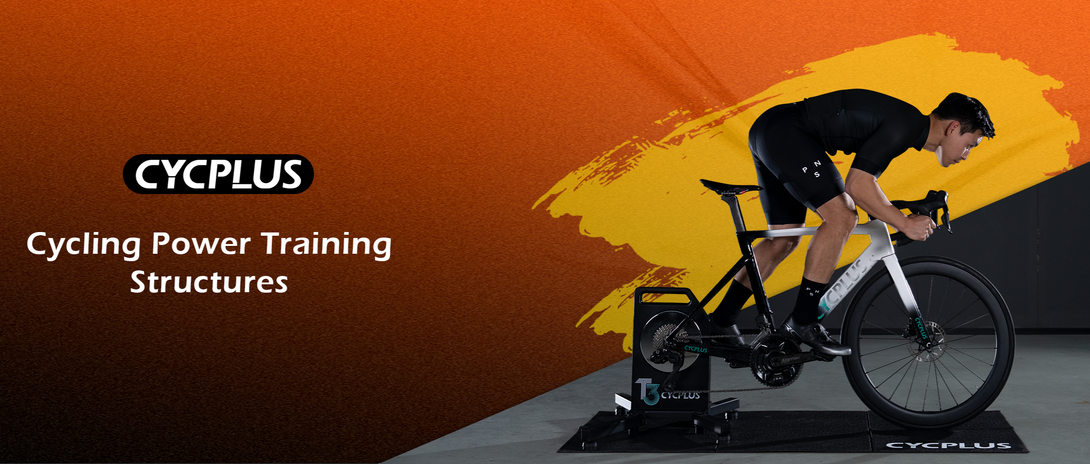Common Cycling Power Training Structures (with Zwift Workouts)
May 9, 2025
Custom content

Power-based training has become the foundation of modern cycling. By targeting specific power zones (measured against FTP — Functional Threshold Power), riders can focus on improving endurance, threshold, sprint ability, and recovery. Platforms like Zwift make these workouts more engaging and structured, offering virtual routes and ready-made training sessions.
Here’s a breakdown of the nine most common power training structures and their corresponding Zwift workout examples.
1. Endurance Training (Zone 2)
Purpose: Improve aerobic metabolism, enhance fat utilization, and build a foundation for long rides.
Structure:
- Intensity: 60–75% FTP (Zone 2)
- Duration: 1.5–3 hours
- Zwift Example: Aerobic Base Builder
Key Points:
- Maintain steady low intensity, avoid drifting into anaerobic zones.
- Ideal for recovery days or base-building early in the season.
2. VO₂ Max Intervals
Purpose: Increase VO₂max, boost anaerobic endurance, and improve lactate tolerance.
Structure:
- High Intensity: 105–120% FTP, 3–5 minutes per set
- Recovery: 50% FTP, equal or slightly shorter than effort phase
- Zwift Example: The Wringer (multiple 4-min high-intensity efforts)
Key Points:
- Repeatedly stress the lactate threshold to improve clearance capacity.
- Strictly manage recovery time to maintain quality.
3. Threshold Training (FTP)
Purpose:
Raise FTP and extend high-intensity endurance, crucial for TT and long efforts.
Structure:
- Intensity: 90–105% FTP (Zone 4)
- Duration: 10–20 min per set, total 40–60 min
- Zwift Example: Threshold Blaster
Key Points:
- Sweet Spot (88–94% FTP) reduces fatigue accumulation, suitable for consecutive training days.
- Use ERG mode to hold steady power and cadence.
4. Climbing Repeats
Purpose: Build muscular strength and climbing endurance while simulating real-world gradients.
Structure:
- Gradient: 4–8% simulated
- Cadence: 50–70 RPM
- Intensity: 80–90% FTP (Zone 3–4), 5–15 min per set
- Zwift Example: Alpe du Zwift Prep
Key Points:
- Strengthens quadriceps and core through high-torque output.
- Virtual climbs help develop mental toughness.
5. Sprint Intervals
Purpose: Improve explosive power (5–30 sec sprints) and neuromuscular coordination.
Structure:
- Intensity: 150–200% FTP (Zone 7)
- Sprint Duration: 8–15 sec
- Recovery: 5–10 min of easy spinning
- Zwift Example: Sprint School
Key Points:
- Focus on rapid acceleration from low speed to peak power.
- Always warm up properly to avoid injury.
6. Recovery Rides
Purpose: Promote circulation, accelerate lactate clearance, and relieve muscle fatigue.
Structure:
- Intensity: <55% FTP (Zone 1)
- Cadence: 90–100 RPM
- Duration: 30–60 min
- Zwift Example: Coffee Cruise
Key Points:
- Combine mental relaxation with physical recovery.
- Enjoy virtual landscapes to make it fun.
7. Long-Distance Endurance (Gran Fondo Simulation)
Purpose: Simulate multi-stage races or century rides, enhancing energy management and resilience.
Structure:
- Intensity: 70–85% FTP (Zone 2–3)
- Duration: 3–6 hours
- Zwift Example: Four Horsemen (multiple climbs)
Key Points:
- Hydration and fueling strategies are critical.
- Manage pacing across segments to avoid late-stage fatigue.
8. Cadence Drills
Purpose: Improve cadence control, efficiency, and adaptability across different pedaling rates.
Structure:
- High Cadence: 100–120 RPM, low resistance (Zone 2)
- Low Cadence: 50–60 RPM, higher resistance (Zone 3)
- Zwift Example: Cadence Boost
Key Points:
- Focus on smooth pedaling and reducing “dead spots.”
- Monitor both power and cadence for balanced control.
9. Training Recommendations
Phase Goals:
- Base Phase: Focus on Zone 2 endurance + cadence drills.
- Build Phase: Add threshold and VO₂max workouts (1–2 times per week).
- Race Prep: Incorporate race simulation sessions (Race Prep Series).
Avoid Overtraining:
- High-intensity sessions (VO₂max) max 2 per week.
- Balance with recovery rides.
Data Tracking:
- Sync Zwift with Strava or TrainingPeaks.
- Track TSS (Training Stress Score) to monitor load.
Conclusion
By combining structured workouts in Zwift with power-based training, cyclists can systematically improve aerobic and anaerobic capacity, strength, and technical skills. Whether preparing for a Gran Fondo, a time trial, or simply aiming to break personal records, these structured sessions help riders train smarter, recover better, and race stronger.


